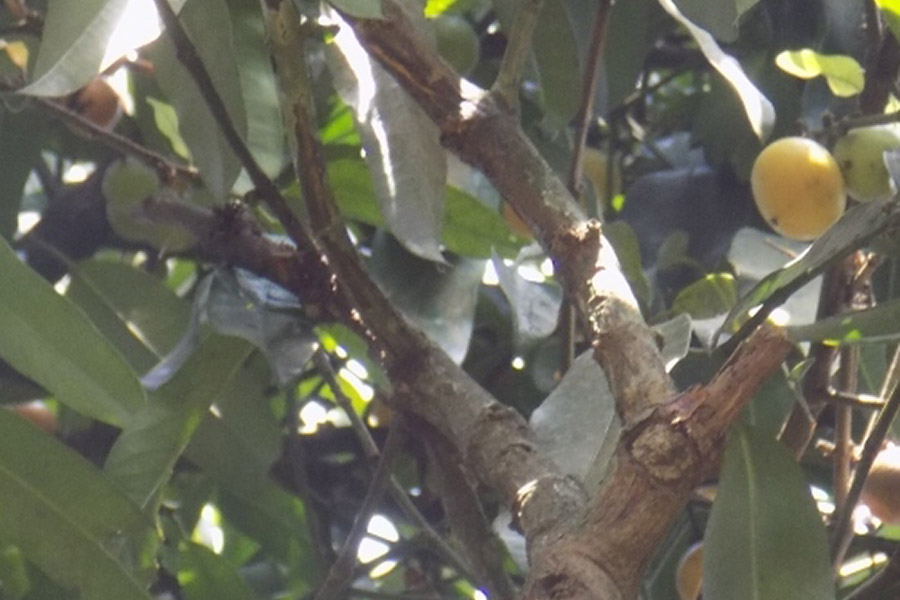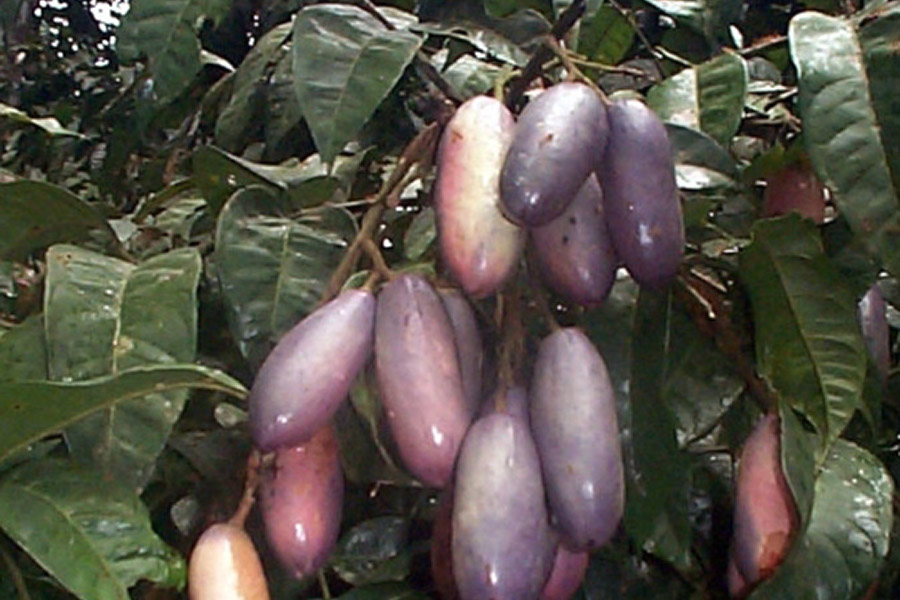Five Tree Species Helping to Ease Global Hunger
Introduction
Unfortunately, many people around the world—particularly those in the developing portions of Africa and South Asia— face hunger on a daily basis. Politics, socioeconomic factors, war, and other human-caused challenges all contribute to the problem, but in many cases, a lack of suitable crops is at the root of the issue.
Fortunately, local governments, scientists, farmers, and nongovernmental organizations are working hard to address these problems. One way they are doing so is through the development of new fruit tree programs ; specifically, they have begun developing cultivation programs for native trees that produce edible fruit.
Several different species are proving useful in this context, including the five discussed below. Some have already gained a foothold in the marketplace and are frequently featured in the diets of rural people, but others have yet to penetrate the marketplace in any meaningful fashion.
Of course, none of these trees are the equivalent of rice, corn or potatoes—they are never going to become staple crops. However, they should all reduce some of the demand for food in the world’s hungriest regions. With luck, these and other unheralded fruit trees will help improve the lives of those in the developing world.
Bitter Kola ( garcinia kola )
Garcinia Kola Tree – Hiobson Wikipedia Commons
Medicinal and Nutritional Properties
Bitter kola, also known as garcinia kola , is a tree indigenous to West Africa. The seeds of this tree are widely consumed for their medicinal properties. They are believed to aid in the treatment of various ailments such as coughs, throat infections, and even malaria. While many of these alleged benefits have yet to be demonstrated scientifically, some of the claims are consistent with empirical data . Additionally, the seeds are used to improve digestion and boost the immune system. Bitter kola’s high content of antioxidants helps protect cells from damage and supports overall health.
Economic and Environmental Impact
The cultivation and trade of bitter kola provide significant economic benefits to local communities. The seeds are sold in local markets and are a source of income for many families. Bitter kola seeds undergo a lengthy dormancy period; for this reason, seedlings are typically not common in markets of the region, and most commercially grown kola trees are propagated from cuttings. Environmentally, bitter kola trees contribute to forest conservation and biodiversity. They grow well in tropical climates and can be integrated into agroforestry systems, promoting sustainable land use and providing shade for other crops. By encouraging the growth of bitter kola trees, we can support both human health and environmental sustainability.
Bush Mango ( irvingia gabonensis )
Bush Mango Fruits – Asit K. Ghosh Wikimedia Commons
Nutritional and Economic Benefits
The bush mango , also known as irvingia gabonensis , is a remarkable tree native to the forests of East Africa. It produces a sweet fruit commonly referred to as “mango,” although it is not a true mango. The fruit and its seeds, known as dika nuts, are rich in fats and proteins. These nutrients are crucial in regions where diets are often deficient in essential fats and proteins, making the bush mango an invaluable food source. The fruits can be consumed raw, jellied, or roasted, providing versatile dietary options for local communities.
Environmental and Agricultural Impact
In addition to its nutritional benefits, the bush mango tree offers substantial economic advantages. It is widely used as a shade tree and a source of timber, contributing to local economies in central Africa. The cultivation of bush mangoes supports sustainable agricultural practices, helping to improve soil quality and reduce deforestation. By integrating bush mango trees into agroforestry systems, farmers can enhance food security while promoting environmental conservation.
African Plum ( dacryodes edulis )
African Plums – Wikimedia Commons
Nutritional Value
The African plum , or dacryodes edulis , is another vital tree species in the fight against global hunger. The fruit, often referred to as “butter fruit” due to its high fat content and creamy texture when cooked, is a significant source of calories and essential fatty acids. These fatty acids are crucial for brain development and overall health, particularly in children. The fruit’s ability to provide a dense calorie source makes it an essential part of the diet in many African communities.
Economic and Ecological Contributions
African plum trees are also valued for their wood, which is used in construction and furniture making. The commercial cultivation of African plums provides income for local farmers and contributes to the economic stability of rural areas. Environmentally, these trees help maintain biodiversity and improve soil health by preventing erosion and enhancing nutrient cycling. Wild African plum trees often reach large sizes—some may exceed 120 feet in height. Their large size also makes them effective carbon sinks, playing a role in mitigating climate change.
Njangsa ( ricinodendron heudelotii )
Culinary and Nutritional Uses
Njangsa trees, scientifically known as Ricinodendron heudelotii , are towering rainforest giants found across central Africa, from Senegal to Sudan, and as far south as Angola and Madagascar. The seeds of these trees are edible and packed with nutrients, making them a valuable food resource. Njangsa seeds are commonly used in cooking to add flavor and nutritional value to dishes.
While they do not appear to be vulnerable to many specific pests, njangsa trees are a food source for many native caterpillars. However, rather than viewing these larvae as pests, local villagers often consider them an important supplemental source of protein.
Environmental and Economic Importance
Domesticated since the mid-1990s, njangsa trees are integral to the local economy. The edible nuts are economically important across much of central Africa, providing financial benefits to farmers. These trees are also known for their resilience against pests, reducing the need for chemical pesticides and promoting sustainable farming practices. By supporting the cultivation of jangsa trees, communities can boost their food security and economic resilience.
African Star Apple ( chrysophyllum albidum )

African Star Apple Tree
Health and Nutritional Benefits
The African star apple, or chrysophyllum albidum , is celebrated for its sweet, edible fruit, which is a rich source of vitamins and minerals. The fruit is consumed fresh and is highly appreciated for its nutritional benefits, particularly its high vitamin C content, which is essential for immune function and skin health. The fruit also contains antioxidants that help protect against chronic diseases.
Multifaceted Uses and Benefits
Beyond its nutritional value, the African star apple tree provides materials for firewood, timber, and traditional medicine. In many African cultures, various parts of the tree are used to treat ailments ranging from skin infections to digestive issues. In fact, in interviews with researchers , rural residents in southern Benin believed that different parts of star apple trees could treat fifteen different ailments. This multifunctional use of the tree enhances its value and importance in local communities. Cultivating African star apples can support both health and economic development, contributing to overall community well-being.
Conclusion
Trees like the bush mango, African plum, njangsa, African star apple, and bitter kola play crucial roles in addressing global hunger and improving food security. These species offer a range of benefits, from nutritional and economic advantages to environmental sustainability. By promoting the cultivation and use of these trees, we can help alleviate hunger, support local economies, and protect our planet.
Unfortunately, none of these species are widely available to North American property owners. However, plenty of other exotic fruit trees can thrive in the Bay Area, so if you would like to grow some unusual edible fruits, give us a call. We can help you select the perfect species for your yard and instruct you on proper care and maintenance.
No matter whether your yard is filled with rare exotics or common natives, choose Arborist Now for expert tree and shrub pruning services in the San Francisco Bay area. Contact us today to get started!
Originally published on May 18, 2016.





